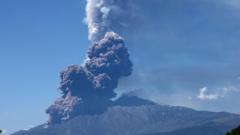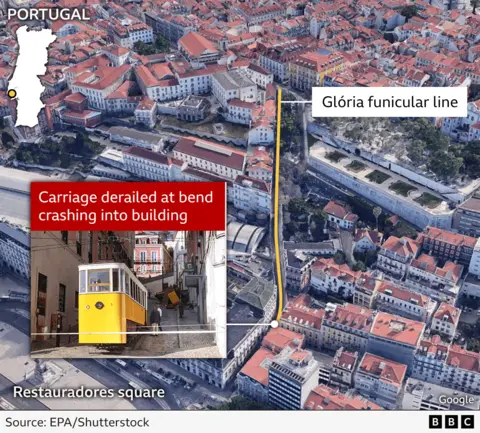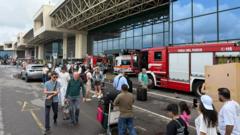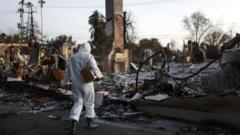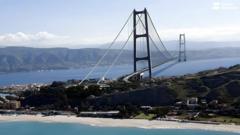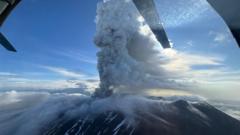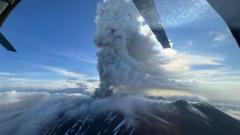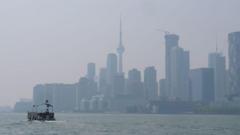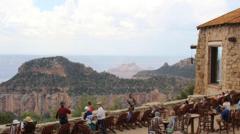Mount Etna in Sicily has erupted again, showing off its volcanic power with large clouds of ash and smoke filling the sky. Early Monday morning, the Italian National Institute of Geophysics and Volcanology (INGV) reported a series of increasingly intense explosions. While the eruption is significant, it seems to be causing little disruption to flights, with operations at local airports running smoothly.
Geologists are tracking the eruption closely, noting that it likely emerged from a 200m-wide vent on the southeastern edge of the volcano. Video footage displays an impressive pyroclastic flow - a rapid mix of ash, gas, and rock cascading down Etna’s slopes. Although this flow can be hazardous, monitoring efforts suggest no threats to surrounding areas as the volcanic material hasn't spread past the Valley of the Lion.
This recent activity follows a noticeable increase in Etna's movements early in the morning, revealing an ongoing "Strombolian" eruption. These eruptions are typically marked by sporadic explosions fueled by gas bubbles in the magma. While this can pose threats to nearby aircraft, a red alert initially issued was later downgraded. The last major eruption back in February caused Catania airport to divert multiple incoming flights due to ash. Tourists will continue to be advised to steer clear of the volcano's active lava flows.
Geologists are tracking the eruption closely, noting that it likely emerged from a 200m-wide vent on the southeastern edge of the volcano. Video footage displays an impressive pyroclastic flow - a rapid mix of ash, gas, and rock cascading down Etna’s slopes. Although this flow can be hazardous, monitoring efforts suggest no threats to surrounding areas as the volcanic material hasn't spread past the Valley of the Lion.
This recent activity follows a noticeable increase in Etna's movements early in the morning, revealing an ongoing "Strombolian" eruption. These eruptions are typically marked by sporadic explosions fueled by gas bubbles in the magma. While this can pose threats to nearby aircraft, a red alert initially issued was later downgraded. The last major eruption back in February caused Catania airport to divert multiple incoming flights due to ash. Tourists will continue to be advised to steer clear of the volcano's active lava flows.

